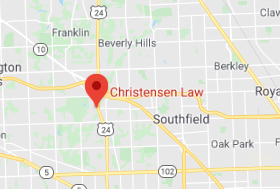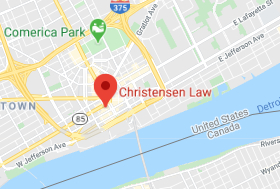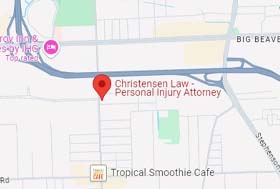
When you are injured by the intentional, reckless, or negligent acts of another party, you are usually entitled to seek compensation from that at-fault party for your damages. Although damages in a personal injury case obviously include economic losses suffered by the injured party, such as medical expenses and lost wages and income, injured parties may also be entitled to seek compensation for non-economic damages like pain and suffering.
Economic damages are often easily calculated by looking at bills, invoices, pay stubs, etc. But calculating non-economic damages often poses a far more difficult task since there aren’t any invoices or receipts to refer to. As a result, insurance companies or juries might underestimate the impact of your injuries on your life since they aren’t “in your shoes,” and may award you less compensation for your pain and suffering than you really deserve.
In order to ensure that you receive maximum compensation for the non-economic damages you’ve suffered as a result of your injuries, you need an experienced personal injury attorney on your side who can help you understand the full extent of the pain and suffering damages you may be entitled to.
If you have been injured through no fault of your own, contact Christensen Law today to schedule a free case evaluation to talk to a skilled personal injury attorney to learn more about the compensation you may be entitled to for your pain and suffering. Christensen Law trial lawyers have set records in jury trial verdicts for non-economic damages.
What Does Pain and Suffering Mean?
Pain and suffering is usually defined as the physical and mental anguish caused by an injury.
This anguish can arise from:
- Physical injuries
- Discomfort caused by aches and pain
- Emotional or mental suffering caused by temporary or permanent limitations on your activities or ability to care for yourself.
- Worry over a possible shortening of your life
- Depression
- Embarrassment caused by physical disability or visible disfigurement
- Any other negative repercussion on your life caused by your injuries
How to Calculate Pain and Suffering
Unlike economic damages – which are typically objectively calculated from bills, receipts, invoices, or income statements – non-economic damages are more subjectively calculated.
In practice, the amount of non-economic damages awarded in a personal injury case usually bears some relation to other economic damages awarded in the case, such as for medical bills, future costs of care and treatment, and lost income and earning potential, along with other factors.
Pain and suffering damages are intended to compensate you for personal difficulties that you would not have had to go through had you not been injured by the negligent or at-fault party. For example, while economic damages can compensate you for the wages you did not earn because you had to miss time from work due to your injuries, economic damages don’t compensate you for not being able to take part in physical activities you previously enjoyed. Examples include being able to play an instrument, or engage in recreational sports, or travel, or having to deal with embarrassment when people stare at or talk about physical disfigurement you’ve suffered, such as extensive burns or an amputation.
Pain and suffering damages do not have an exact standard of measurement. Instead, the amount of pain and suffering damages are intended to be fair and just under the circumstances of the case. That is why it is important that you and your attorney build a strong legal case that can help the party deciding your compensation for non-economic damages, whether an insurance adjuster in a settlement negotiation or a jury at a trial, easily understand the personal difficulties you have gone through as a result of your injuries.
How to Document Pain and Suffering
In order to maximize your compensation for pain and suffering damages, you need to begin documenting evidence to support your damages claim. The types of documents and evidence that you might use to help prove the extent of your pain and suffering (and thereby increase the amount of compensation you are awarded) could include:
- Expert opinion of a mental health provider, testifying as to your emotional and mental state of mind
- Expert opinion from a physician or other medical expert about the pain you have suffered
- Other expert opinions on the value of certain pain and suffering damages (for example, the inability to work in a chosen specialized career or to engage in personal activities you previously enjoyed, like playing an instrument or participating in recreational sports)
- Documentation of prescription medication you have used to treat pain or emotional/mental issues
- Testimony from family, co-workers, and friends as to their observations of your pain and suffering and the changes your injuries have had on your personal life
- Your own testimony as to the impact of your pain and suffering on your life (Keeping a diary of your experiences as you recover from your injuries can be especially persuasive.)
When insurance companies consider pain and suffering awards during settlement negotiations, they will consider several factors in your case, such as:
- The severity of your injuries
- The pain and discomfort typically associated with your injuries
- The types and amount of medical treatments needed for your injuries
- How long it will take your injuries to heal
- Whether you will need additional care, including future surgeries, pain or other medication, or physical/occupational therapy
- How your injuries have specifically impacted the quality of your life, your career, your personal relationships, etc.
Insurance companies sometimes rely on formulas as a guidepost for negotiations over pain and suffering damages. One formula simply multiplies your medical expenses times a number between 1 and 5 chosen according to the insurance company’s determination of the severity of your injuries; the more severe your injuries, the higher the multiplier. Insurance companies may also use a per diem method that simply pays you a certain amount per day until you reach maximum medical improvement.
Of course, since pain and suffering damages are based on subjective calculation, the results of these formulas can be varied upward through aggressive and skilled negotiation by your personal injury lawyer.
An experienced personal injury attorney can help you construct a persuasive narrative to support your claim for pain and suffering damages, clearly explaining to the insurance company or to a jury what you can no longer do as a result of your injuries. For example, explaining that you can no longer play with your children, go skiing or hiking, or travel as a result of your injuries can be helpful in striking a sympathetic chord with those tasked with determining your compensation in your personal injury case.
What Is the Difference Between Economic and Non-Economic Damages?
Economic damages include those losses that you can easily place a dollar value on, and usually arise from the out-of-pocket expenses you incur during your recovery from your injuries. Economic damages are more easily determined, often simply by adding up your bills or multiplying your time missed from work against your salary or wage.
Conversely, non-economic damages often do not have a price tag on them. Instead, they are often based on a subjective determination of what amount would be “fair” to compensate you for the personal difficulties you have had to go through due to your injuries.
Examples of Economic Damages
- Medical bills and invoices
- Estimated costs of future medical treatment
- Lost wages or salary for the time missed from work
- Loss of earning capacity or potential, equal to the difference between your pre-injury and post-injury income, or the income you would have earned if you are temporarily or permanently totally disabled from working
- Costs of home care and domestic services
- Cost to repair property that was damaged when you were injured, or the replacement of cash value for property that was destroyed
Examples of Non-Economic Damages
- Physical pain and suffering
- Physical disability
- Physical or visible disfigurement
- Emotional trauma, stress, anxiety, and depression
- Loss of companionship with a spouse and with family
- Loss of enjoyment or quality of life, arising from the inability to care for oneself or to participate in activities you previously enjoyed
- Loss of the ability to work in a specialized career
How Can a Lawyer Help with Your Claim
Without an effective legal argument, an insurer or defense lawyer may simply dismiss your claim for pain and suffering damages out of hand. An aggressive, skilled plaintiffs’ personal injury attorney can help you pursue the maximum value possible in your pain and suffering claim.
Some of the ways that an attorney can help you with your claim include:
- Develop evidence and testimony to support your claim.
An attorney can help you secure expert testimony that will also bolster testimony from you and your family regarding the effect your injuries have had on your life. Your attorney can also help you and your family and friends focus your testimony so that the insurance company or a jury clearly understands what you have had to go through due to your injuries and can better sympathize with you.
- Seek a larger award for your pain and suffering.
Insurance companies will try to negotiate a lower amount of pain and suffering damages in your settlement or reject your claim for such damages outright. A lawyer can ensure that you have sufficient documentary evidence and testimony from friends and family members to clearly demonstrate the condition of your life before your injuries and after your injuries.
Insurance adjusters and defense lawyers may try to discredit the testimony of your family and friends as inherently biased. An experienced attorney might look to receive testimony from others who see you on a regular basis but have no real personal stake in the outcome of your case, such as co-workers or neighbors.
An attorney may also try to argue for an increased award for pain and suffering by establishing dollar figures for each aspect of your life that has been negatively impacted by your injuries – for example, putting a dollar figure on every time you would have gone hiking or skiing or mountain biking but were unable to do so because of your injuries.
- Present your pain and suffering damages claim to the jury at trial.
An attorney can ensure that your claim for pain and suffering damages is clearly presented to the jury. Juries can easily understand and calculate economic damages because they can review medical bills and other invoices and receipts. But juries tend to have more trouble putting a number on pain and suffering damages.
Unfortunately, jury instructions provided by trial courts don’t make the concept of pain and suffering damages any less abstract. Defense attorneys often rely on jury confusion over pain and suffering damages to get the jury to award you less than you deserve. An experienced personal injury attorney will know how to help a jury of regular persons understand the extent of your injuries and the negative impacts they have had on your life.
Talk to a Lawyer Now About Pain and Suffering Damages
If you have suffered serious injuries due to someone else’s legal fault, you may be entitled to compensation for the pain and suffering you have endured as a result of your injuries. At-fault parties want to limit the compensation they have to pay to you by underestimating your pain and suffering damages.
You need a dedicated, experienced Michigan personal injury attorney who will help you build a strong, persuasive case to show the impact your injuries have had on your life and seek to maximize your financial recovery for pain and suffering.
Schedule a free, no-obligation consultation with Christensen Law to talk to us about your case and to learn more about how our firm can assist you with securing the full and fair compensation you deserve for your pain and suffering. Call us today.






